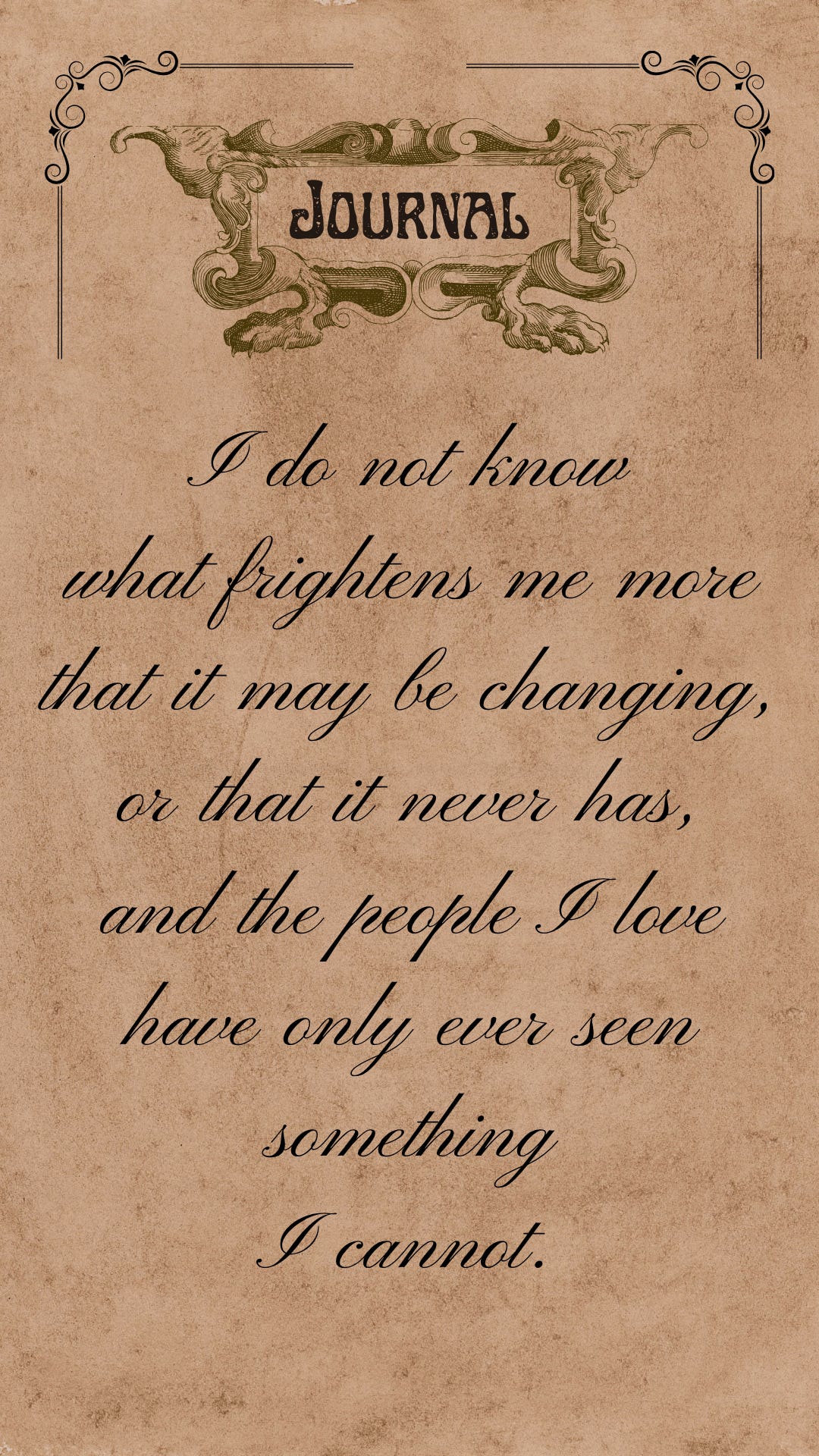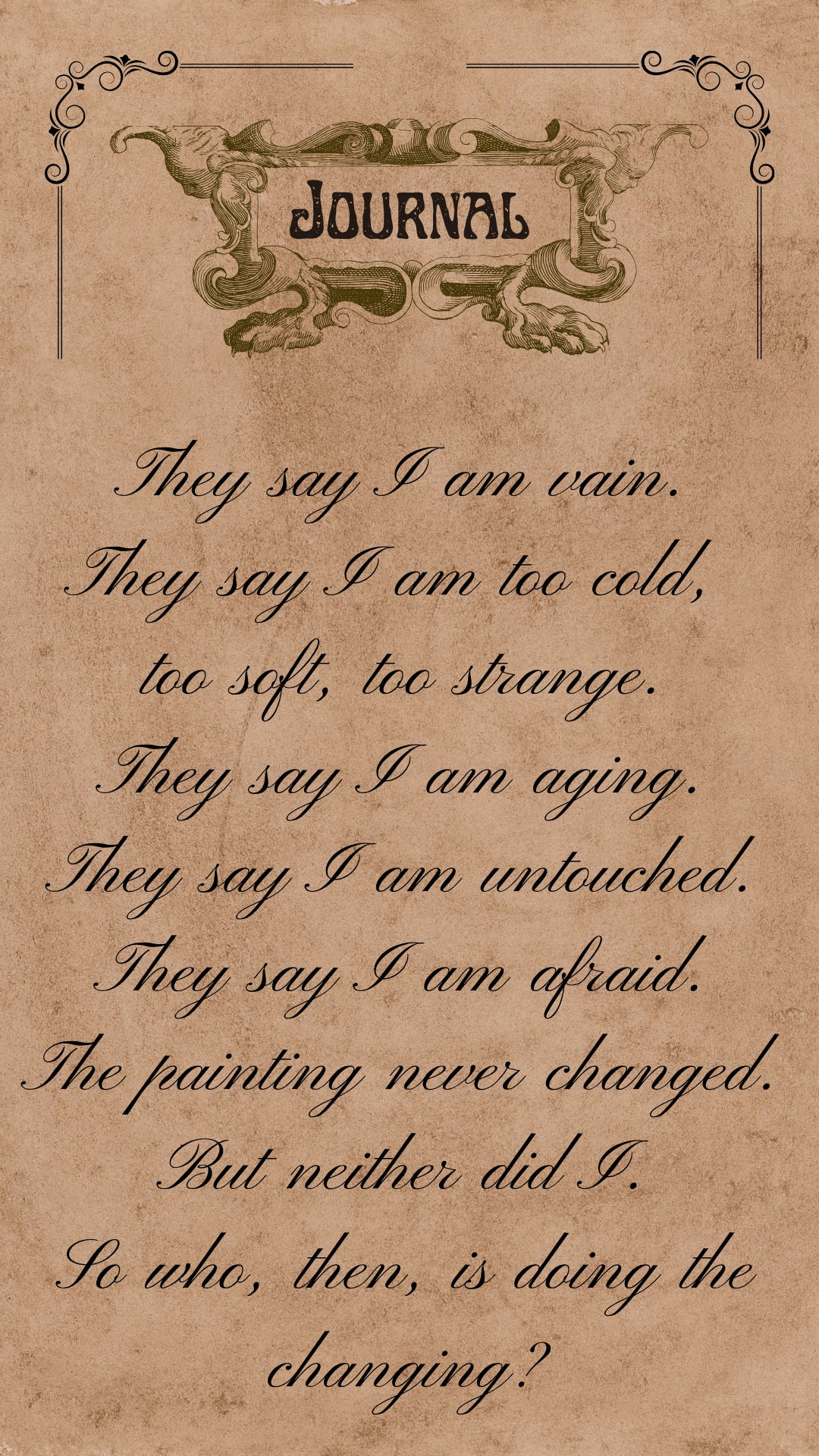42 Doughty Street, London
Charlotte MacBraith did not believe in ghosts. She believed in structure, in narrative, in the disciplined unfolding of a scene. She believed in tea left to steep four minutes, not five. She believed in the weight of ink on paper, the click of a carriage bolt in her typewriter, and the slow draw of fog curling across the iron railings outside her Bloomsbury townhouse at half past six.
But she did not believe in ghosts. Not until the day her maid screamed in the drawing room.
The scream was sharp, real. No fainting flourish, no shrill exaggeration. Just one hard sound, like something had broken inside the girl’s throat.
Charlotte dropped her pen. Ink stained her cuff.
When she found Mary in front of the portrait, the girl was pale as parchment, hands clenched at her skirts, eyes fixed wide on the frame that hung above the hearth.
“It moved,” she whispered.
Charlotte blinked. “I beg your pardon?”
“Miss, it…” Mary swallowed. “The painting. You. You were smiling at me. Just now. And your eyes were... not right.”
Charlotte looked up. The portrait was one of her few indulgences. Painted three years ago, oil on canvas, framed in carved blackwood from her grandfather’s estate in Stirling. It showed her seated in profile, gloved hands folded neatly, a soft expression on her face, not joy, not sorrow. Just stillness.
“It hasn’t changed,” Charlotte said gently, stepping forward.
The girl refused to come closer.
“I swear, Miss. I see it. I…I do not mean offense. But it looked at me.”
Charlotte studied the painted eyes. They gazed somewhere beyond the viewer, unfocused and polite. As they always had.
“I think, Mary, you may be overworked.”
“No, Miss. Forgive me, I…” Mary shook her head, knuckled tears from her eyes. “I’ll fetch the tea.” She fled.
Charlotte remained, staring at herself in the frame. The oil had faded slightly with time, yellowing at the edges, but the expression was unchanged. Stillness. She turned away.
Behind her, very faintly, the floorboards creaked. Like someone leaning forward.
It was a Thursday, dim with rain. The gaslight in Charlotte’s study flickered like it had caught the chill. She didn’t write much that day. The words came, but not the rhythm.
She watched the window more than the page.
Mary still refused to enter the drawing room alone. She made tea in silence now, glancing over her shoulder as though expecting her own reflection to blink first.
Charlotte tried to ignore it. She told herself the girl had simply seen her own fancies in the painted face, nothing more.
But the moment kept scratching behind her thoughts like a trapped moth.
She invited her cousin Alastair to visit. A solicitor by trade, unflappable and fond of logic. She trusted him not to entertain foolishness.
“Still writing ghost stories?” he asked, brushing rain from his hat.
“Not tonight.” She smiled. “Tonight, I want to test a theory.”
“Lord help us. You sound like Grandfather when he was neck deep in whiskey and sea charts.”
She brought him to the drawing room. The fire was lit low. Shadows played upon the hearth like old music.
“There,” she said. “What do you see?”
Alastair stepped forward. The portrait loomed above the mantle, elegant and familiar.
He was quiet for too long.
“Well?” Charlotte prompted, her voice more brittle than intended.
“She looks...” He frowned. “Charlotte, she looks furious.”
Charlotte blinked. “What?”
“Her mouth. It’s…your mouth, I mean. But it’s drawn tight. There’s tension in the cheek. And the eyes, Christ, you’ve never looked at me like that before.”
She turned to the portrait. It was as it always had been. Calm. Composed. Stillness in oils.
“I see no such thing,” she said.
Alastair’s brow furrowed. “Then either I’ve gone mad, or you’re playing a trick.”
“I am not.”
They stood together in the firelight. One saw fury, the other grace.
Late that Night Charlotte sat in the study, writing in her journal.
For a time, Charlotte tried to forget.
She shut the drawing room door and returned to her writing, crafting characters who could be understood, controlled. They said what she told them to say. They bled only where the plot demanded it.
But in the quiet, the portrait called. Not with sound, but with weight. A room sealed too long begins to press against its own walls.
She invited her editor next. Mrs. Harrow was kind, respected, unsentimental.
“I should like your opinion on a portrait,” Charlotte said, her tone airy. “An old piece. I wonder if it still resembles me.”
Mrs. Harrow adjusted her gloves. “You want brutal honesty, then?”
“I always do.”
The older woman stepped into the room, chin high. Her gaze landed on the painting and she paused, just for a moment.
“Well?” Charlotte prompted.
“She’s quite... young. A bit too young, don’t you think?”
Charlotte’s lips parted. “It was painted only three years ago.”
Mrs. Harrow tilted her head. “Yes, but she looks barely twenty. Innocent. As if she’s never spoken a hard word in her life.”
Charlotte said nothing. Because what she saw was a woman of thirty two, quiet and composed, with thoughtful lines and intelligent eyes. Not some pale, perfect girl child.
Later that week, she invited Dr. Bellamy, a friend of her father’s who had always doted on her. He looked upon the painting and chuckled.
“She looks terrified,” he said. “Did the painter startle her?”
Charlotte’s throat clenched. “Terrified?”
“Yes, see the tightness in the jaw, the way the hands clutch the lap? Quite the anxious little rabbit. Not how I remember you, of course, but artists do exaggerate.”
Charlotte dismissed him early.
She stood alone in the flickering hearth light, gazing up at the face that now looked, what?
Not terrified.
Not young.
Not angry.
Just calm. Just... her.
And yet…
Not one person had seen her the same way.
Charlotte sat writing in her journal again.
For three nights, Charlotte did not light the lamps in the drawing room.
She sat before the fireplace with only the low hiss of coals for company, letting the shadows settle in around her like the folds of a heavy cloak.
She stared at the painting. It stared back. No flicker. No twitch. No sudden, spectral change. Just stillness, perfected. She leaned forward. Spoke aloud, her voice dry as paper.
“Who do you see?”
She looked into the painted eyes. And then, she did not see herself. She saw a woman with the same name but none of her patience.
Hair unbound,
lips unafraid.
Hands not folded, but curled,
ready to grasp,
to tear,
to write truths she’d never dared.
She saw rage.
She saw longing.
She saw the version of herself
that lived behind every polite smile.
The painting showed her
not as the world had made her,
but as she could have been,
if no one had ever told her to be
less.
She gasped. And staggered back. The painting remained unphased, staring at her but now, it smiled. Just barely. But enough. The portrait did not change again.
Not when Charlotte covered it.
Not when she uncovered it.
Not when she watched it for hours from her chair near the hearth, the coals whispering like old lovers.
The smile remained.
Not cruel. Not kind.
Knowing.
That was the worst of it.
A dozen times she thought to burn it. She brought a poker to the canvas once, even pressed it close enough that the oil softened, the heat drawing a shiver of distortion across the face.
But she didn’t strike.
Because some part of her
a part she couldn’t write into story,
couldn’t wrap in the safety of fiction
wanted to become that woman.
The one who looked back.
~by Heather Patton / The Verdant Butterfly








Thoughtfully spooky. 🖤
I love this so much! Beautifully written, wonderfully spooky. Reminiscent of Wuthering Heights and Jane Eyre. https://youtu.be/-1pMMIe4hb4?feature=shared